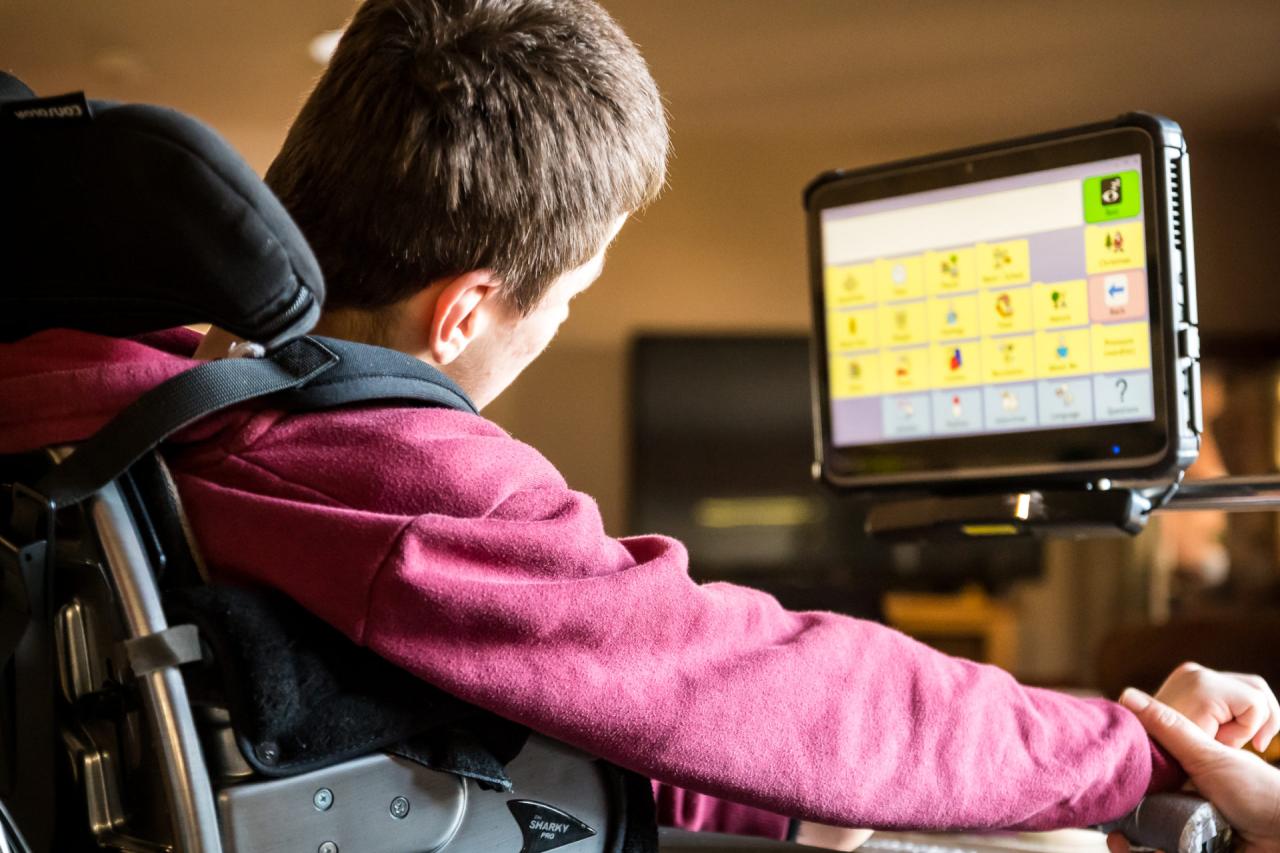Assistive Technology for TBI: Empowering Recovery
Assistive technology for TBI is a crucial aspect of rehabilitation, offering individuals with traumatic brain injuries the tools and support they need to regain independence and improve their quality of […]

Assistive technology for TBI is a crucial aspect of rehabilitation, offering individuals with traumatic brain injuries the tools and support they need to regain independence and improve their quality of life. TBI, or traumatic brain injury, is a complex condition that can significantly impact cognitive, physical, and emotional functioning, often leading to challenges with memory, communication, mobility, and social participation.
Assistive technology provides innovative solutions to these challenges, enabling individuals with TBI to overcome barriers and engage in meaningful activities. From memory aids and communication devices to adaptive equipment and assistive technologies for social interaction, a wide range of tools are available to enhance cognitive function, improve communication, support physical mobility, and facilitate social participation.
Assistive Technology for TBI

Assistive technology (AT) plays a crucial role in the rehabilitation and recovery of individuals with traumatic brain injury (TBI). AT refers to any device or system that helps individuals with disabilities to perform tasks they might otherwise have difficulty with. In the context of TBI, AT can address a wide range of challenges, including cognitive impairments, physical limitations, and communication difficulties.
Categories of Assistive Technology for TBI
AT for TBI can be broadly categorized into several key areas, each addressing specific needs and challenges. These categories work in tandem to enhance the overall well-being and independence of individuals with TBI.
- Cognitive Assistive Technology: This category includes tools and software designed to support cognitive functions such as memory, attention, and executive functioning. Examples include:
- Reminder apps: These apps help individuals with memory difficulties to remember appointments, medications, or important tasks.
- Task management software: These programs help individuals with executive functioning challenges to organize and prioritize tasks, manage time effectively, and stay on track with goals.
- Cognitive training software: These programs provide exercises and games that aim to improve specific cognitive skills such as attention, memory, and problem-solving.
- Communication Assistive Technology: This category encompasses devices and software that assist individuals with communication difficulties. Examples include:
- Augmentative and alternative communication (AAC) devices: These devices allow individuals who have difficulty speaking to communicate using a variety of methods, such as pictures, symbols, or text-to-speech software.
- Speech-generating devices (SGDs): These devices allow individuals with speech impairments to communicate using synthesized speech.
- Communication boards: These boards contain pictures or symbols that represent words or phrases, allowing individuals to communicate using gestures or pointing.
- Physical Assistive Technology: This category includes devices that assist individuals with physical limitations. Examples include:
- Wheelchairs: Wheelchairs provide mobility for individuals with mobility impairments.
- Adaptive utensils: These utensils are designed to make eating easier for individuals with limited hand function.
- Assistive devices for dressing: These devices can help individuals with dressing challenges, such as button hooks, zipper pulls, and sock aids.
- Environmental Control Systems: These systems allow individuals to control their environment using various methods, such as voice commands or remote controls. Examples include:
- Smart home technology: This technology allows individuals to control lighting, temperature, and appliances using voice commands or smartphone apps.
- Environmental control units (ECUs): These devices allow individuals to control lights, appliances, and other environmental features using a variety of input methods, such as switches, joysticks, or eye-tracking systems.
Role of Assistive Technology in TBI Rehabilitation, Assistive technology for tbi
AT plays a vital role in improving independence, quality of life, and participation in society for individuals with TBI.
- Increased Independence: AT empowers individuals with TBI to perform tasks they might otherwise have difficulty with, fostering greater independence in daily life. For example, a reminder app can help an individual with memory impairments remember to take medication, while a communication board can assist an individual with speech difficulties in expressing their needs and desires.
- Improved Quality of Life: By addressing specific challenges, AT can significantly enhance the quality of life for individuals with TBI. For instance, a wheelchair can provide mobility and independence, while adaptive utensils can make mealtimes easier and more enjoyable.
- Enhanced Participation in Society: AT can facilitate greater participation in society for individuals with TBI. For example, cognitive training software can help individuals with attention difficulties to focus and participate in educational or employment settings. Similarly, communication assistive technology can enable individuals with speech impairments to communicate effectively with others, fostering social inclusion and engagement.
Closing Summary: Assistive Technology For Tbi
Assistive technology plays a vital role in empowering individuals with TBI to lead fulfilling lives. By addressing specific needs and providing individualized solutions, assistive technology empowers individuals to overcome challenges, regain independence, and actively participate in their communities. The ongoing development of innovative technologies promises to further enhance the lives of individuals with TBI, offering greater opportunities for recovery and a brighter future.
Assistive technology plays a crucial role in helping individuals with traumatic brain injuries (TBI) regain independence and improve their quality of life. Just as advancements in soil technologies enhance agricultural productivity, innovative assistive devices empower TBI survivors to overcome challenges and achieve their goals.
From communication aids to mobility devices, these technologies provide essential support and enable individuals to participate fully in their communities.





